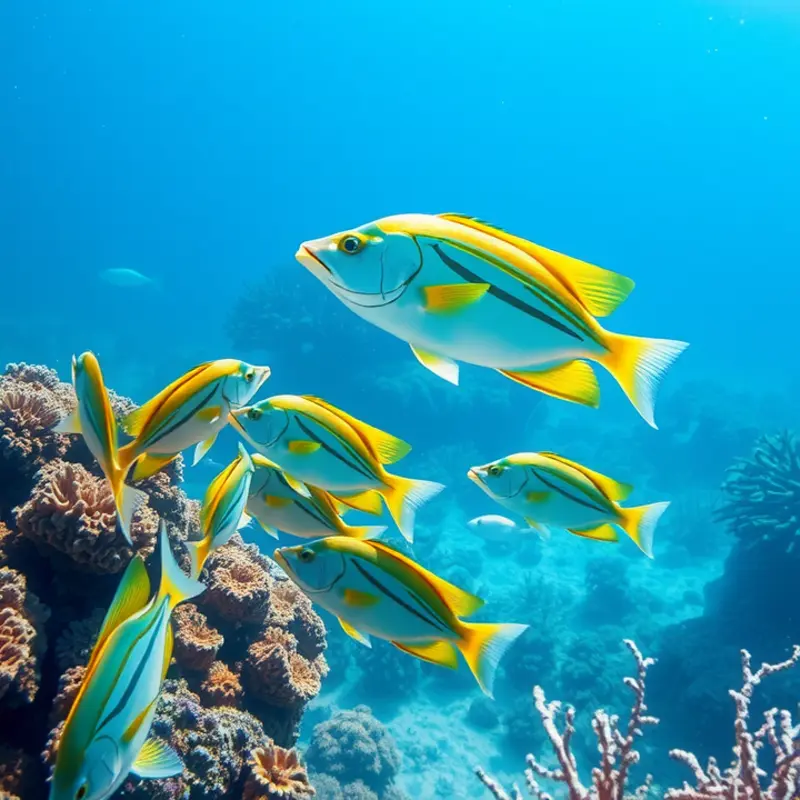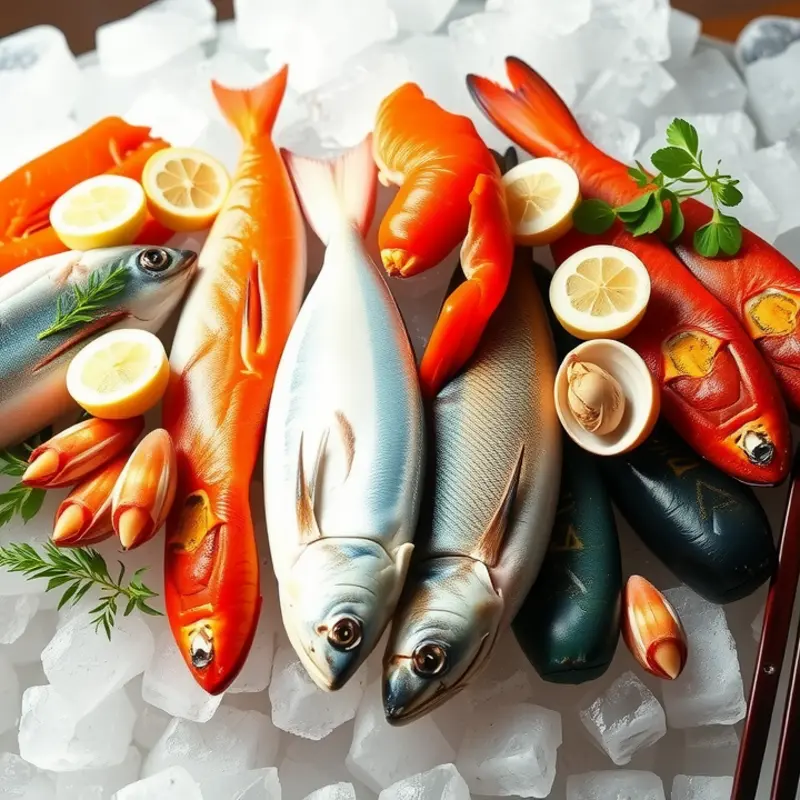Supporting sustainable fisheries starts on our plates. With the fish market posing significant environmental challenges, making informed seafood choices is essential for the health of our oceans. By prioritizing sustainably sourced seafood and understanding the impact of overfishing, we can enjoy delicious meals while protecting marine ecosystems. This commitment not only fuels our bodies but also supports the regeneration of fish populations. Let’s explore how we can change our eating habits to champion sustainability.
Understanding Sustainable Fisheries

Sustainable fishing practices help maintain fish populations and preserve aquatic environments, ensuring long-term ocean health. At the core of sustainable fisheries are methods that allow fish populations to regenerate. This prevents exploitation and protects vulnerable marine species.
Overfishing poses one of the greatest threats to marine ecosystems. It occurs when fish are caught at a faster rate than they can reproduce, leading to population imbalances. Such practices can cause cascading effects, disrupting food chains and depleting resources that millions rely on for sustenance and employment.
Understanding fish populations is crucial. Some species, like tuna, have slower reproductive rates and are more susceptible to overfishing. In contrast, species like sardines reproduce rapidly, making them more resilient to fishing pressures. Selecting species that can sustain fishing reduces stress on fragile ecosystems.
Another strategy is the responsible sourcing of seafood. Sustainable seafood is harvested with environmentally conscious methods that minimize habitat destruction. For instance, some fisheries avoid practices like trawling which can devastate sea floors and the species that dwell there.
To help consumers make informed choices, various certifications and labels indicate sustainable seafood. Labels like the Marine Stewardship Council (MSC) and Aquaculture Stewardship Council (ASC) provide assurance of responsible practices. Recognizing these labels helps you make more eco-friendly choices when shopping or dining out.
In stores and restaurants, look for transparent information about the origin of seafood. Sustainable options often highlight their traceable supply chains, reassuring you of their lower environmental impact.
Embracing sustainable seafood benefits not only ecosystems but also consumers. It ensures future generations enjoy ocean bounty and maintains biodiversity crucial for healthy marine life.
Reducing pressure on fish stocks aligns with broader sustainable eating practices. Explore how minimal prep dinner ideas can incorporate sustainable seafood to create delicious yet eco-friendly meals at home.
By understanding these aspects, you contribute to a fishing industry that respects the ocean’s limits and supports environmental health.
Making Informed Seafood Choices

Navigating the seafood market can initially seem daunting, but understanding a few key principles can make the process both rewarding and beneficial for the planet. With the growing awareness of overfishing and unsustainable practices, choosing seafood responsibly is crucial.
Identifying Sustainable Seafood
The first step in making informed choices is recognizing sustainable options. Look for labels like the MSC (Marine Stewardship Council), which certifies wild-caught seafood that meets rigorous environmental standards. The ASC (Aquaculture Stewardship Council) focuses on responsibly farmed seafood. These certifications ensure that the seafood is harvested with minimal environmental impact and with consideration for fish populations.
To further guide your decision-making, consider consulting seafood guides available online that rank fish varieties based on their sustainability. These guides help identify the ‘best choice’, ‘good alternative’, and ‘avoid’ lists based on current population levels and fishing practices.
Shopping and Menu Decisions
When shopping, engage with fishmongers and ask about the origins of their products. They are usually knowledgeable about where their seafood comes from and can provide insights into sustainable options in their stock.
In restaurants, don’t hesitate to inquire about the sourcing of their seafood dishes. Many chefs and eateries pride themselves on sustainable sourcing, and transparency in this regard is becoming a more common expectation.
Integrating Sustainable Seafood into Your Diet
Incorporating sustainable seafood into your diet can be done through thoughtful meal planning. Begin by exploring versatile recipes that celebrate the natural flavors of sustainable seafood. Meals such as grilled mackerel with lemon and herbs or a vibrant seafood paella can highlight the taste while reducing waste through portion awareness.
Batch cooking, a practice that minimizes waste, can also be beneficial. Preparing large quantities and storing them properly can save time and reduce spoilage. For tips on storing seafood efficiently and reducing preparation waste, visit this guide on practical ingredient batching.
Recipes and Techniques
Experimenting with flavors can also be gratifying, and using natural flavor enhancers like citrus, herbs, and spices can elevate your dishes without adding excessive sodium. Simple recipes, such as lemon-garlic baked cod, focus on the delicate flavor of the fish while being easy to prepare.
Make the most of versatile, sustainable seafood by integrating it into varied dishes. Stir-fries, salads, and tacos can all be complemented by responsibly sourced fish or shellfish.
Through these practices, not only do we enjoy the bounty of the sea, but we also contribute positively to preserving marine ecosystems for future generations. By making informed choices, we take a step towards healthier living and a healthier planet.
Final words
Taking steps towards adopting sustainable seafood practices contributes positively to ocean health and encourages responsible fisheries management. By understanding what sustainable fishing means, knowing how to select appropriate seafood, and seeking certified options, every meal can become a meaningful choice for the environment. Remember, every bite counts; your commitment to sustainable seafood is a step towards collective action against overfishing and ecosystem destruction. Embrace the power of informed eating habits and be a part of the solution for a thriving marine environment.








